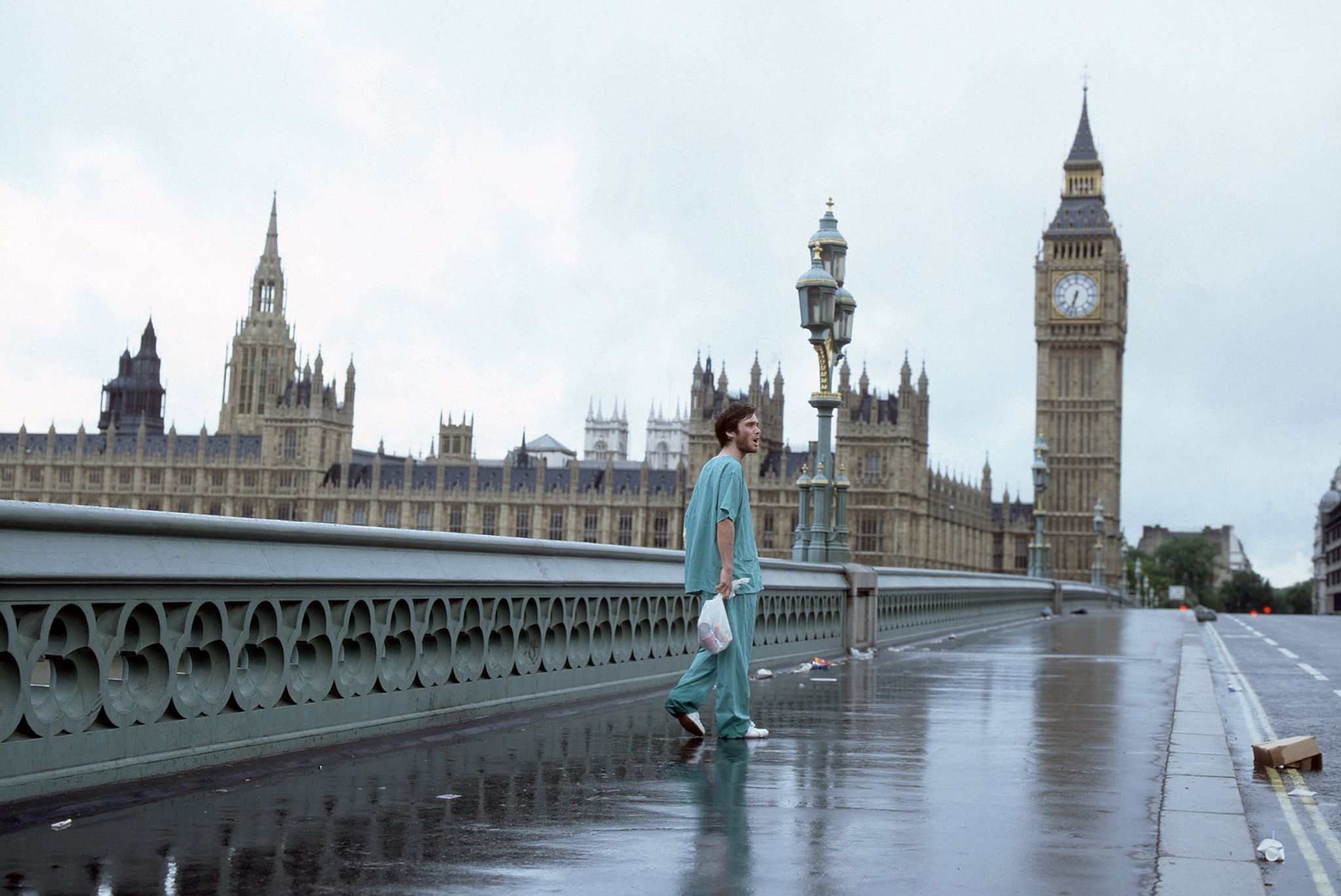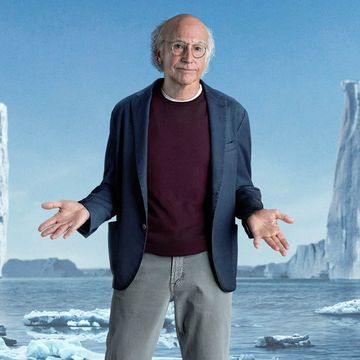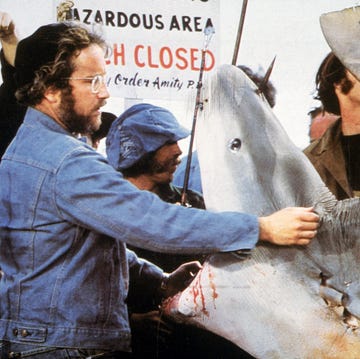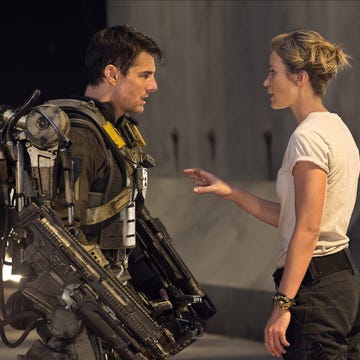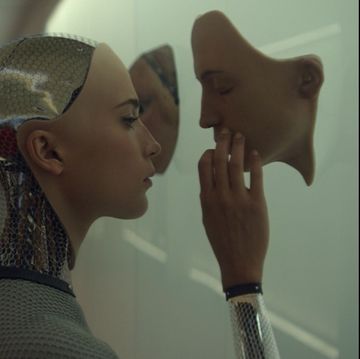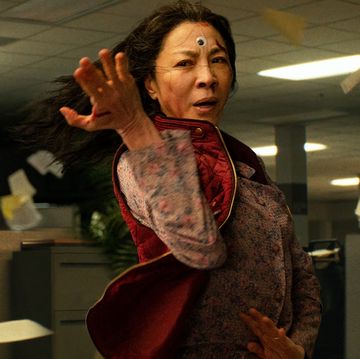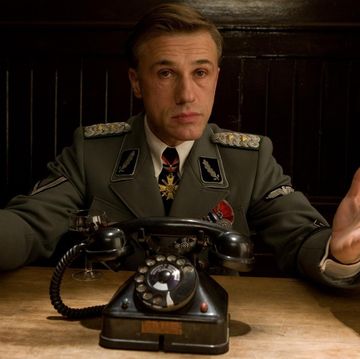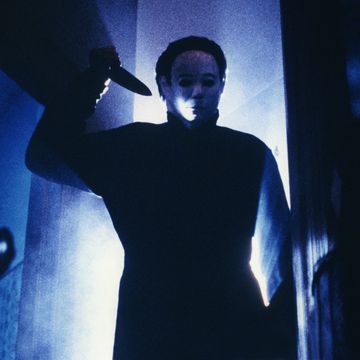They say the truth is stranger than fiction. It is, at the very least, much scarier. For in 2022, despite the stark warnings of Greta Thunberg, Al Gore and a legion of climate experts, we edge ever close to the abyss. The truth is stranger than fiction then. But it's not as entertaining, and luckily enough, the best apocalypse movies are far more fun than the actual end of the world.
They're thought-provoking, and dramatic, and often very, very sandy. They're about ordinary people and extraordinary people as they navigate a whole range of shit situations; lack of water, famine, unreasonable aliens, desert warlords, nuclear threat and even extraterrestrial language barriers. Though we're running short on fossil fuels, never fear: there are countless means to humanity's end.
These apocalypse movies hold something of a morbid fascination too. As society grapples with its own existence, interest in The End has unsurprisingly piqued. We want to know the ways in which we might go. And directors (and deep-pocketed studios) are answering these questions with quality cinema that is, thankfully, a little more thoughtful than Independence Day.
They're more miserable, too. Because the end days will inevitably come, and you'll want to plan for every eventuality – or, at the very least, soothe your fears with a sporadic Happy Ending (we included those too). Here's the best apocalypse movies ever made.
Melancholia (2011)
Directed by the arch confuser of cinema goers, Lars von Trier's Melancholia is a film that, upon its release, united both critics and audience in applause. That doesn't happen often for a Danish auteur that believes "a film should be like a stone in your shoe".
But Melancholia feels more like a pain in your chest. Set during an elitist wedding attended by the rich and mentally unwell (an ensemble cast includes Kirsten Dunst, Charlotte Gainsbourg, Alexander Skarsgård, Charlotte Rampling and Kiefer Sutherland) a rogue planet is set on a collision course with Earth, and the approaching apocalypse forces a fractured family to reckon with issues of depression, free will and disillusionment in this grippingly bleak tale.
28 Days Later (2002)
Imagine sleeping through the advent of a zombie apocalypse. Well, you no longer have to thanks to 28 Days Later: a haunting, primal horror that sees a then largely unknown Cillian Murphy navigate a virulent London after waking from a coma.
Directed by Trainspotting's Danny Boyle, 28 Days Later skips over the stately machinations of the government to give us a bird's eye view of the normal people trying to survive in a very abnormal situation, like a father and daughter, a group of renegade soldiers and a widowed chemist-turned-hard nut impeccably played by Naomie Harris. Against the backdrop of an abandoned, silent Westminster, and following the recent mass exodus from cities around the world, 28 Days Later feels eerily prescient.
Take Shelter (2011)
Construction worker Curtis LaForche (Michael Shannon) is an unlikely seer. And yet his dreams say otherwise: rain "like fresh motor oil", frenzied neighbours and murders of very angry crows that suggest the end of the world is nigh in sinister psychological thriller Take Shelter.
Sadly, his psychiatrist is somewhat skeptical of the premonitions, pointing to the worrying behaviour of the film's protagonist (stealing materials from work to build a secret storm shelter) and a history of paranoid schizophrenia. This central tension is Take Shelter's biggest strength as we try to understand whether LaForche truly is a doomsday prophet, or simply succumbing to an entrenched genetic illness.
Dr. Strangelove (1964)
Dr. Strangelove (Or How I Learned To Stop Worrying And Love The Bomb) is a pitch black comedy in which director Stanley Kubrick is at his finest. The end of the world happens on-screen. Leaders comically deal with its fall out, and debate as to who is more upset. And all the while, the inventor of WMDs, the eponymous Dr. Strangelove, is getting a little too excited at the prospect of all-out annihilation.
All of which makes for a pretty great film. Though beneath the iconic images of maddened generals riding missiles, and a haunting reuse of Vera Lynn's wartime classic, Kubrick's satire of the Cold War is a razor-sharp, masterful portrayal of the absurdities of global conflict.
When The Wind Blows (1986)
Don't be fooled by When The Wind Blows' pedigree. Though directed by Jimmy Murakami, the American animator behind The Snowman, this tragic tale is no squishy Yuletide rerun. Instead, it moves the looking glass from world leaders in times of nuclear war to the lives of the little people it affects, as an elderly couple attempt to survive a looming apocalypse using government pamphlets and equally useless stiff upper lips.
Set against a thumping soundtrack by David Bowie, Squeeze and Paul Hardcastle, this fusion of traditional animation and stop-motion has aged wonderfully. And better yet, it's a stark reminder of how even the most well intentioned of government guidance can fail in a worst case scenario.
Arrival (2016)
Arrival isn't strictly about the apocalypse. Though when a series of giant, hellish pumice stones silently fall onto horizons across Earth, it sure looks that way.
A sombre Amy Adams is the linguist ordered to communicate with this new fleet of alien beings, who don't speak English causing consternation among Brexit Party voters nationwide. And it's the Oscar-nominated actor that carries the film as she delivers a performance rarely explored in the genre: slow, thoughtful and secretive, and one that understands how apocalypse can also be a domestic affair too.
This Is The End (2013)
Seth Rogan is well-known for smuggling lorry-loads of his famous, guffawing mates into all of his films (especially if they're buddy-buddy with director Judd Apatow, too). He's not so well-known, however, for killing them off one-by-one in some of the most brutally gruesome ways imaginable.
But that's what we got from his co-directorial debut This is the End, where hordes of celebrities (playing themselves) fell victim to an unexpected demon apocalypse. We're talking Rihanna falling down a fiery sinkhole to the centre of the Earth. Michael Cera gorged on a lamppost through his spine. That kind of thing.
Akira (1988)
In 1988, almost a half-decade after America's nuclear attack on Hiroshima, Tokyo is obliterated by a psychic teenager named Akira. It sparks World War III and, 31 years later, the city (now called Neo-Tokyo) is stained with violence, crime and poverty.
And it seems the solo horseman of the apocalypse is due a second coming, as Kaneda, the leader of a delinquent biker gang, becomes embroiled in a pending crisis alongside his friends, the troubled Tetsuo, and Kei, a resistance activist.
Adapted from a manga epic, Akira is the product of a nation that firmly understands the atrocities and tragedies of war, and the film's comment on how the world shouldn't work chimes louder than ever in 2022.
Armageddon (1998)
Armageddon is an exercise in bad policy decisions. After all, some interstellar mastermind deemed it appropriate to send a team of oil drillers into space to destroy an Earth-bound, extinction-dawning asteroid (including Ben Affleck, who can't even do his own trousers up let alone save the human race).
And, under the steer of Michael Bay, a man that arguably loves pyrotechnics more than his own children, it makes for one wild (if not lovingly risible) example of how to save the world.
12 Monkeys (1995)
A second appearance from Bruce Willis here, but is that really a surprise? He's exactly the kind of guy you need in any apocalypse scenario. A wise-cracking action hero who looks like a light bulb, can screw in a lightbulb and prevent the extinguishing of the light of humanity.
A real triple threat, then. Though this time around, it's less cosmic absurdity, more futurisimo pharmaceuticals as a deadly virus has wiped out almost all life in 2035. It's up to Willis to go back in time and stop it happening, but the science nerds in charge send him too far back. Cue a mental hospital, a very poorly Brad Pitt and a film that received rapturous applause upon its release.
The Road (2009)
Adapted from Cormac McCarthy's 2006 Pulitzer-winning novel of the same name, The Road is proof that indeed, all roads lead to somewhere. It's just that some destinations aren't so pleasant.
It tells the story of an unnamed man (played by Viggo Mortensen) who, in a bid to protect his son in the aftermath of a cataclysmic disaster, is headed to the coast where it's said to be warmer. The only problem is the torrid wasteland in between is full of despair, light on food, and marked by marauding cannibal gangs.
At its concrete, bruised heart, The Road is a study on how elastic morality can be in the face of desperation and death. This is no feel-good, coming-of-age saga.
Mad Max (1979)
As captivating as Tom Hardy may be in Mad Max: Fury Road (more on that later), Max Rockatansky's original adventure is a pre-bombast, post-joy prelude to the 2015 reboot, and a film that thrives despite a budget considered meagre even by 1979 standards.
Much like it's titular hero, it had to work with scraps - but somehow, despite its shallow pockets, director George Miller managed to create one of the most viscerally thrilling action movies of all-time as Max seeks revenge across the outback of a collapsing Australia. But the most impressive thing of all? This was Miller's first ever feature film.
Mad Max: Fury Road (2015)
If Mel Gibson depicted Max Rockatansky at the beginning of the end, Tom Hardy's turn in the V8 Interceptor is very much at the end of the end: the world is but an LSD-fuelled desert filled with despair, and ruled by a water-hording tyrant named Immortan Joe.
But when said despot's Five Wives escape – an enslaved harem of women that decide to exercise their own agency in this cruel man's world – Mad Max becomes their accidental protector, co-piloting a grizzled turncoat in Charlize Theron who takes centre stage as the pair traverse a wasteland in this explosive, coruscating car chase. About as thrilling as the apocalypse gets.
10 Cloverfield Lane (2016)
Though 10 Cloverfield Lane shares the same same universe as the namesake monster flick (and the cosmic nonsense of Paradox), this is no stomach-churning, handheld lo-fi survival saga.
Instead, Dan Trachtenberg's directorial debut is a traditional monster film in name only, as the survivor of a road accident (new gen scream queen Mary Elizabeth Winstead) awakes to find herself imprisoned in an underground bunker, with an ominous saviour in John Goodman explaining that she's been saved from an unprecedented airborne attack.
But has she? Has she really? 10 Cloverfield Lane keeps the audience guessing at every turn in this claustrophobic, labyrinthine film, and proves that what's on this planet can be far scarier than those from elsewhere.
Children of Men (2006)
As generations increasingly postponed the act of childrearing, the biology of Children Of Men halted it altogether as the world is plunged into mass infertility, and the prospect of a dying human race.
Which is as uplifting as it sounds. Though what sets Alfonso Cuarón's futuristic great apart isn't the grisly stoicism of its anti-hero Clive Owen (which is good), or the masterful appetite for single-shot sequences (which is really good). It's the creation of a futuristic, unfamiliar world that appears wholly familiar with a national mood of xenophobia, quiet bubbling rage and the intrinsic glimmer of hope that comes in the form of a young illegal immigrant that has found herself inexplicably pregnant.
On The Beach (1959)
The radiation hasn't yet spread to Australia, but it will. There's no doubt about that. Slowly but surely, the nuclear fallout wrought by WWIII will engulf the Southern Hemisphere, and finish off every living creature on Earth.
Or at least that was the accepted logic, up until the Royal Australian Navy receives an incomprehensible morse code signal coming from the West Coast of the United States. A group of survivors (played by an impressive cast of Gregory Peck, Ava Gardner, Anthony Perkins and Fred Astaire) climb into the last American nuclear submarine and set off in search of hope in this Stanley Kramer epic.
Based on Nevil Shute's novel of the same name, it tells the story of how the human psyche reacts when its fuelled with fears of complete annihilation, and how we each behave when there is nothing left to lose.
